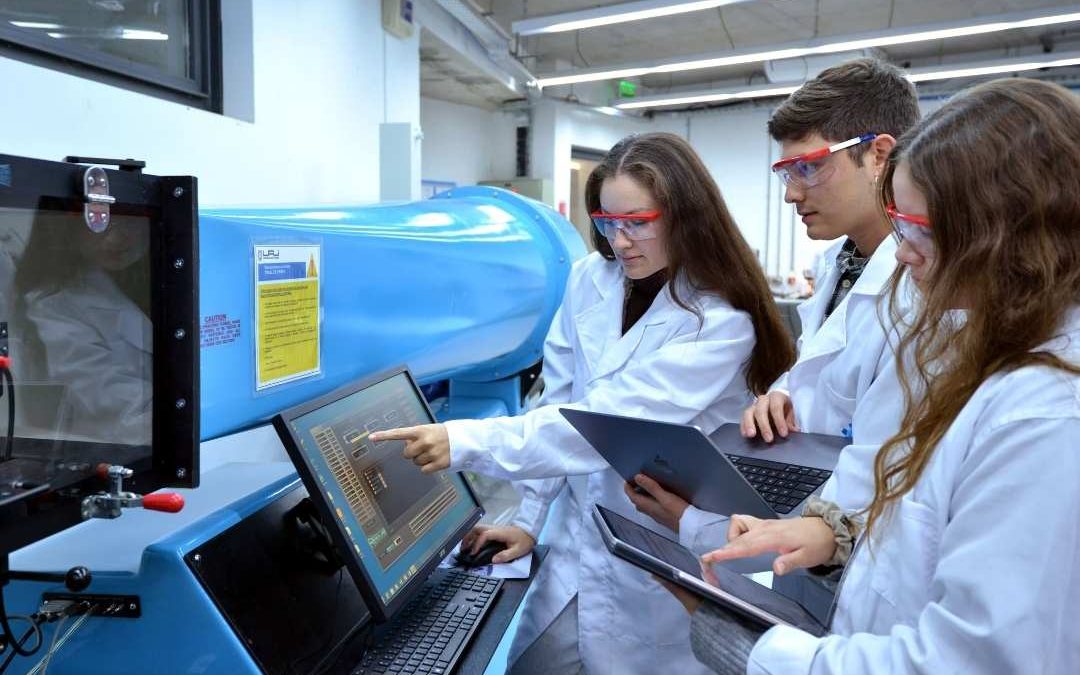New UAI renewable energy lab course allows students to learn about solar and wind energy in the field and power electronics in the lab
Among its attractions, it includes a “wind tunnel” to measure the impact of various variables on wind turbines and a photovoltaic field to analyze the impact of various operation and maintenance strategies on production and operating costs. The infrastructure also allows new photovoltaic modules to be tested under real conditions and to conduct research and technology transfer.
The Civil Engineering in Energy career of the Faculty of Engineering and Sciences of the Universidad Adolfo Ibáñez, Peñalolén Campus, launched its new undergraduate course, “Renewable Energy Laboratory”, which has infrastructure for practical experiences on wind energy, solar photovoltaic and even on green hydrogen and electromobility, in controlled and safe environments.
PhD. Luis Gutiérrez, director of the Civil Engineering in Energy career of the Faculty of Engineering and Sciences, and researcher of the Center for Energy Transition (CENTRA-UAI), explains how this idea was conceived 3 years ago: “The Energy career has the mission of training specialized human capital to lead the energy transition, bringing together competencies of electrical, mechanical, environmental and industrial engineering. Although the contents of the curriculum were updated in 2020 to enhance the graduate profile, we had the pending debt of putting together a 100% laboratory course in renewable energies, which is very necessary for a career of this type. With this goal in mind, we started installing state-of-the-art equipment, including hybrid inverters and lithium batteries in our photovoltaic plant and a small hydrogen plant. Finally, this year we were able to launch this laboratory course specializing in renewable energy, led by Professor Felipe Larraín, and we hope that the initiative will make a difference with other undergraduate programs.”
“Learning theory in the abstract is not the same as transferring knowledge to practice. The idea is that students are able to work in the field and understand the magnitude of the technical challenges, and for this they need practical skills in the operation and maintenance of wind and solar photovoltaic plants,” explains Felipe Larraín, PhD. in Electrical Engineering, Professor of the UAI Renewable Energy Laboratory and Associate Director of Research at the Center for Energy Transition (CENTRA-UAI).
The infrastructure involves not only renewable energy generation equipment, but also power electronics equipment that acts as an interface. The set of equipment and monitoring and control systems allows for teaching experiences and to put into practice the knowledge acquired in courses such as “Electrical Machines” and “Electrical Power Systems”, for example, to control the speed of a battery-powered induction motor through an inverter with variable frequency, allowing a better understanding of electric vehicles. In addition, students can use the infrastructure to test new power generation prototypes under real environmental conditions for research purposes and transfer to industry.
With respect to solar photovoltaic energy, electrical and meteorological monitoring makes it possible to measure and analyze the performance of monofacial and bifacial photovoltaic modules, and even determine their degradation over time. Felipe Larraín adds: “Even our University in Peñalolén is partly supplied with clean energy thanks to the modules installed in the solar field, which allows our students to understand how a photovoltaic plant is connected to the electricity distribution network”.
Thanks to the so-called “Wind Tunnel”, students can carry out measurements of wind-power curves of wind turbines at scale, modifying the rotational speed of the turbine, the orientation of the blades, etc. In addition to undergraduate and graduate teaching, the laboratory equipment helps to prepare for the retraining of professionals linked to the more traditional energy industry, for example, coal-fired power plant personnel who wish to be introduced to the operation and maintenance aspects of wind and solar power plants.
See new in Portal Innova

